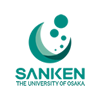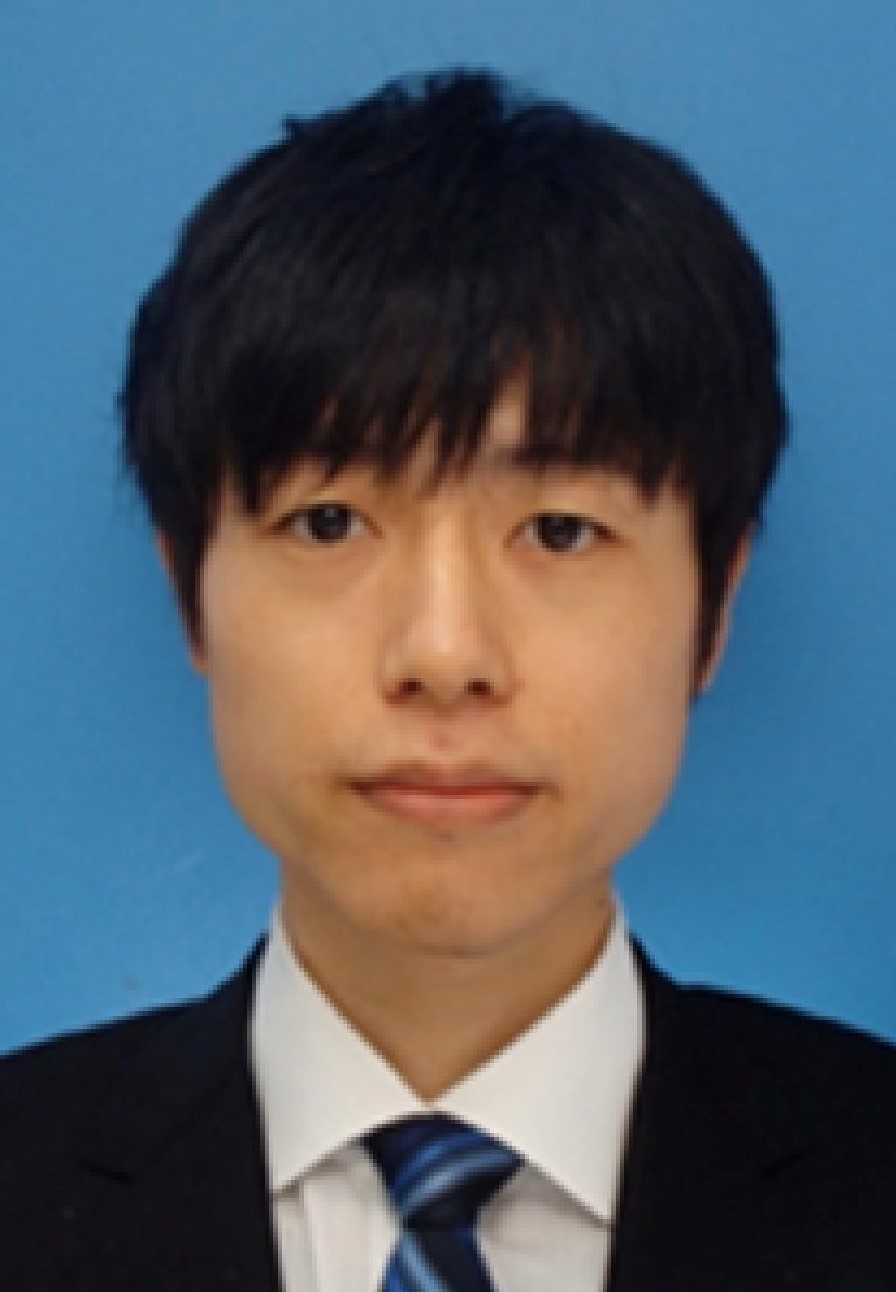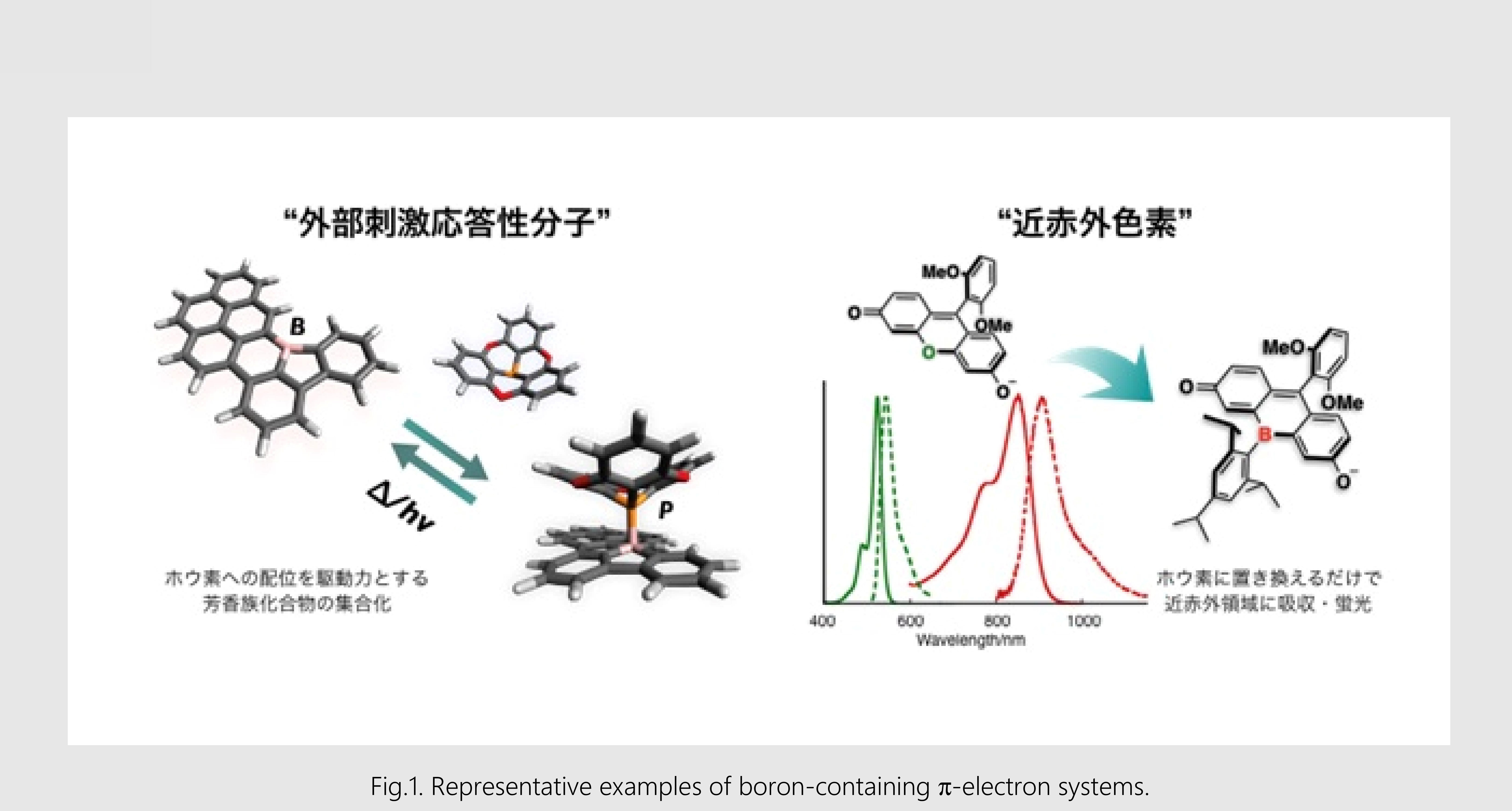
SANKEN
The University of Osaka
大阪大学
産業科学研究所

LAST UPDATE 2021/06/09
-
研究者氏名
Researcher Name安藤直紀 Naoki ANDO
助教 Assistant Professor -
所属
Affiliation大阪大学 産業科学研究所
ナノテクノロジーセンター ソフトナノマテリアル研究分野
SANKEN, The University of Osaka
Department of Soft Nanomaterials, Nanoscience and Nanotechnology Center -
研究キーワード
Research Keywordsπ-共役化合物
典型元素
有機エレクトロニクス
π-Electron Systems
Main Group Elements
Organic Electronics
- 研究テーマ
Research Subject -
典型元素を活かした光・電子機能材料の創製と機能開拓
Development of p-electron systems for optoelectronic applications utilizing main group elements
研究の背景 Background of the Research
π共役骨格は、分子性の光・電子機能の発現の要です。優れた基本骨格の創出は、機能性分子の開発、ひいては有機エレクトロニクスやバイオイメージングなど有機材料を基盤とする科学技術の発展へとつながります。これに対する有用なアプローチとして、π共役骨格への典型元素の導入が挙げられます。一般的なπ共役化合物は、炭素原子と水素原子を中心に構成されますが、典型元素を組み込むことで従来のπ共役化合物では実現困難な物性や機能を付与することが可能となります。
Development of p-conjugated skeletons with intriguing electronic properties and functions will lead to a breakthrough in various fields, including organic electronics and bioimaging. One of the most widely used approaches, to this end, is the introduction of main group elements into π-conjugated skeletons, which gives rise to attractive properties and functions that are difficult to achieve with conventional π-conjugated compounds consisting of only carbon atoms.
研究の目標 Research Objective
特異な光・電子機能をもつ有機材料の設計指針の確立を目指し、典型元素の特徴を活かしたπ共役化合物の設計・合成および機能開拓に取り組んでいます。たとえば、ホウ素の電子欠損性やLewis酸性に着目し、光や熱、外部環境に応答して物性や構造を変化させる分子系や近赤外色素の開発を達成しています。現在は、ホウ素に限らず、元素ならではの特徴や元素間での相互作用に注目し、エレクトロニクス材料への展開を指向したπ共役分子の開発を進めています。
Our research interest is to develop p-electron systems for optoelectronic applications based on the main group strategies. For instance, the use of boron atom enables us to produce not only stimuli-responsive molecules but also near-infrared dyes. We now focus on the exploration of novel p-electron systems for electronics materials and their applications.
研究図Figures

論文発表 / Publications
Angew. Chem. Int. Ed., 2017, 56, 12210. Chem. Commun., 2018, 54, 5213. Chem. Sci., 2019, 10, 7816. J. Am. Chem. Soc., 2021, in press.
研究者連絡先 / HP
- andou.naoki
 sanken.osaka-u.ac.jp、andou.y.1355
sanken.osaka-u.ac.jp、andou.y.1355 m.isct.ac.jp
m.isct.ac.jp - https://www.sanken.osaka-u.ac.jp/labs/omm/